Occupational environment monitoring at a tempered glass manufacturing factory
99,000 ₫
Note: The above price is calculated for one sample, and the price may fluctuate depending on the area of the environment to be monitored and market movements. For more accurate pricing support, please refer to the price list or contact our consulting staff directly.
Monitoring the environment of a tempered glass manufacturing factory is a session of collecting, analyzing, and evaluating workplace factors that may be harmful to workers’ health.
Table of Contents
Toggle1. Overview of the Tempered Glass Manufacturing Factory
a. What is a tempered glass manufacturing factory?
Factory manufacturing tempered glass is a specialized industrial facility designed for producing and processing tempered glass. Tempered glass is a special type of glass created by heating the glass in a furnace and then rapidly cooling it to produce a surface with higher strength and durability compared to ordinary glass. The tempered glass production process typically includes cutting, heat treatment, cooling, and quality inspection.
At a tempered glass manufacturing factory, the main raw material is glass sheets, usually soda-lime silicate glass (float glass) or other types of glass. The process begins with cutting glass into the desired sizes and shapes. After that, the glass sheets are placed in a furnace to reach high temperatures, usually between 600 and 700 degrees Celsius. Once this temperature is reached, the glass is rapidly cooled using a quenching process or cold air.
The quenching process, also known as surface compression, creates stress within the molecular structure of the glass, increasing its strength and load-bearing capacity. As a result, tempered glass can withstand stronger impacts, and when broken, it shatters into small, blunt pieces rather than sharp shards like ordinary glass.
Tempered glass factories typically use specialized equipment and technology to carry out production and quality inspection processes. This ensures tempered glass products meet safety and quality standards and are widely used in applications such as glass doors, partitions, facades, furniture, swimming pools, and phone screens.

b. Production stages in a tempered glass manufacturing factory
The production stages in a tempered glass manufacturing factory may include the following:
- Raw material preparation: Glass sheets (commonly soda-lime silicate glass) are prepared and cut into desired sizes and shapes. This is the first step in the tempered glass production process.
- Heat treatment (heating process): The glass sheets are placed in a furnace at high temperatures (usually between 600 and 700 degrees Celsius). During this stage, the glass is heated until it becomes soft and flexible.
- Rapid cooling (quenching process): After the glass reaches the required temperature, it is rapidly cooled. This can be done using a quenching furnace or cold air. During quenching, the outer surface cools quickly while the inner surface remains hot, creating stress within the molecular structure of the glass.
- Quality inspection: After quenching, tempered glass undergoes quality inspection to ensure it meets safety and quality standards. Inspections may include strength tests, flatness checks, color inspection, and load-bearing capacity tests. Glass that does not meet requirements is discarded or reprocessed.
- Processing and finishing: Finally, tempered glass is processed and finished to create final products. These stages may include flat grinding, coating, cutting to final size and shape, edge polishing, milling, and surface protection.

c. Types of machinery used in a tempered glass manufacturing factory
In a tempered glass manufacturing factory, many types of machinery and equipment are used for production and processing. Some common types include:
- Furnace: The primary equipment used to achieve the high temperatures necessary to soften and shape glass before quenching.
- Quenching furnace: Specialized equipment used to rapidly cool glass after heating. This creates a temperature difference between the outer and inner surfaces, producing stress within the tempered glass.
- Glass cutting machines: Used to cut glass sheets into desired sizes and shapes before heating and quenching.
- Glass processing machines: Including flat grinding machines, edge grinding machines, coating machines, and cutting machines for final sizes and shapes as required.
- Quality inspection machines: Equipment for testing strength, flatness, color, load-bearing capacity, and other quality indicators to ensure compliance with safety standards.
- Protective and safety equipment: Such as drills, water sprayers, dust collectors, and ventilation systems to ensure worker safety within the factory.

d. Possible occupational diseases for workers in tempered glass manufacturing factories
Workers in tempered glass manufacturing factories may suffer from several occupational diseases related to production processes and environmental factors. Common occupational diseases include:
- Respiratory diseases: Glass dust particles in factory air can irritate and inflame the respiratory tract, potentially causing asthma, bronchitis, pneumonia, and other respiratory problems.
- Skin diseases: Contact with chemicals during tempered glass production may cause skin irritation, dermatitis, bleeding, and other skin conditions. Harmful chemicals may include acids, alkalis, solvents, and cleaning agents.
- Eye diseases: Tempered glass production can generate ultraviolet and infrared radiation harmful to the eyes, leading to conditions such as conjunctivitis, keratitis, and other eye disorders.
- Noise-related diseases: Tempered glass factories often have machinery that produces high noise levels. Prolonged exposure can damage hearing, causing hearing loss or tinnitus.
- Hand and neck conditions: Work involving handling and processing tempered glass requires strength and endurance of the hands and neck. Conditions such as cervical degeneration, muscle inflammation, joint disorders, and musculoskeletal issues may occur.
To ensure safety and prevent occupational diseases, personal protective equipment and safe working procedures must be strictly followed. Compliance with regulations, guidelines, and recommendations from health and occupational safety authorities is also essential.

e. Common types of tempered glass on the market
On the market, there are several common types of tempered glass used in various applications, such as:
- Single tempered glass: The basic type, made by heating soda-lime glass and rapidly cooling it. It has good strength and is widely used in doors, partitions, furniture, swimming pools, and glass walls.
- Laminated tempered glass: Made by bonding multiple tempered glass sheets with an interlayer, usually polyvinyl butyral (PVB) or ethylene-vinyl acetate (EVA). It offers higher strength and safety because broken pieces stick to the interlayer, preventing scattering. Commonly used in automotive glass, high-end windows, and safety applications.
- Multi-layer tempered glass: Made by combining multiple single tempered glass sheets with interlayers (plastic, aluminum, or other materials) to enhance impact resistance and penetration resistance. Often used in bulletproof glass, protective glass, and security applications.
- Fire-resistant tempered glass: Specially designed to withstand high heat and prevent fire spread. Commonly used in fire-rated doors, windows in high-risk areas, and public buildings.
2. Overview of Occupational Environment Monitoring Services
a. What is occupational environment monitoring at a tempered glass manufacturing factory?
Occupational environment monitoring (or workplace environmental measurement) at a tempered glass manufacturing factory involves collecting, evaluating, and analyzing workplace environmental factors to implement timely measures, minimize health risks to workers, and prevent occupational diseases. Occupational environment monitoring is mandatory for tempered glass manufacturing factories.
It plays the most important role in protecting and improving worker health because employees are the main resources of enterprises and directly generate profits. Workers frequently exposed to harmful factors beyond permissible limits are at risk of health problems and occupational diseases.
REGISTER OCCUPATIONAL ENVIRONMENT MONITORING SERVICE
b. Nam Viet’s occupational environment monitoring program
Nam Viet’s occupational environment monitoring program is developed by engineers specializing in labor safety and environmental protection. To ensure worker health and safety, the program uses modern measurement methods to monitor air, water, microclimate, physical, and dust factors in the workplace. This program is vital in maintaining a safe work environment and protecting worker health.
Additionally, Nam Viet’s monitoring program contributes to research and development of new solutions to improve workplace environmental quality. With a dedicated and professional monitoring team, Nam Viet’s exclusive program is a breakthrough in occupational safety management and environmental protection in Vietnam.

c. Standardization in workplace environmental measurement procedures
Standardization in Nam Viet’s measurement procedures is crucial to ensure result quality. To guarantee accuracy and reliability, the program follows recognized standards and procedures of the Ho Chi Minh City Department of Health. This ensures collected data is highly reliable for workplace evaluation and improvement decisions to protect worker health.
These standardized procedures are performed by qualified monitoring specialists with years of experience, helping managers and experts trust An Toan Nam Viet’s results for accurate and valuable decisions in protecting worker health and the environment.
By applying standardization, Nam Viet demonstrates its commitment to safe workplaces and contributes positively to occupational safety and environmental management in Vietnam.
d. Reporting results of tempered glass factory monitoring
Monitoring results are prepared according to Form 04, Appendix III issued with Decree 44/2016/ND-CP and made in two copies: one sent to the contracting enterprise and one stored by the monitoring organization.
Monitoring results must be stored indefinitely, as required by law.

e. Frequency of occupational environment monitoring as per law
According to Clause 2, Article 18 of the Law on Occupational Safety and Health 84/2015/QH13, employers must conduct occupational environment monitoring to evaluate harmful factors at least once a year.
f. Deadline for submitting occupational environment monitoring reports
The deadline for submission is before December 31 every year. Enterprises must submit monitoring reports to the Department of Health where the enterprise has its headquarters and where employees are working.
When there are changes in technology, production processes, or facility upgrades that may create new harmful factors, enterprises must update occupational hygiene records with new monitoring requirements.
g. Penalties for violations of occupational environment monitoring for employers
According to Article 27 of Decree 12/2022/ND-CP dated January 17, 2022, on administrative penalties in the field of labor, social insurance, and Vietnamese workers working abroad under contracts:
- Clause 2: A fine of 2,000,000 – 5,000,000 VND for employers who fail to publicly notify employees at the monitoring site and workplace about monitoring results and hazard assessments immediately after results are available.
- Clause 3: A fine of 20,000,000 – 40,000,000 VND for employers failing to perform monitoring to control health hazards as required by law.
- Clause 4: A fine of 40,000,000 – 60,000,000 VND for employers collaborating with monitoring organizations to commit fraud during monitoring, without reaching criminal liability.
3. Harmful environmental factors for workers in the tempered glass factory
Workers in the tempered glass factory may be exposed to several harmful environmental factors. Below are some potential environmental factors that can affect workers’ health in this industry:
- Dust particles: The process of producing tempered glass can generate glass dust particles in the air. Small dust particles can irritate the respiratory tract and, when inhaled, may cause pneumonia, bronchitis, and other respiratory issues.
- Chemicals: Chemicals used in the tempered glass production process such as acids, alkalis, solvents, and cleaning agents can cause skin irritation, dermatitis, and other skin problems. In addition, long-term exposure to these substances can harm the nervous system, liver, and other organs in the body.
- Noise: Machinery and equipment in the tempered glass factory can generate high noise levels. Continuous and loud noise can negatively affect hearing, leading to problems such as hearing loss and tinnitus.
- Light: During the glass heating and processing stages, strong light, including ultraviolet (UV) and infrared (IR) rays, may be present. Prolonged exposure to UV and IR light can damage the eyes and skin, causing conjunctivitis, keratitis, and other issues.
- Temperature: The heating and sudden cooling processes in tempered glass production can create working environments with high temperatures or sudden temperature changes. Workers may face risks of burns, body temperature imbalance, and other health problems.
REGISTER FOR OCCUPATIONAL ENVIRONMENT MONITORING SERVICE
4. Measures to improve the working environment in the tempered glass factory
Improving the working environment in the tempered glass factory is an important factor to ensure the health and safety of workers. Below are some measures that can be applied to improve the working environment:
- Ventilation and exhaust system: Ensure that the factory’s ventilation system works properly to provide fresh airflow and remove polluted air. Use effective exhaust systems at locations that may generate dust or chemical vapors to minimize exposure to harmful substances.
- Chemical management: Apply safety measures in the use, storage, and handling of chemicals. Ensure safe chemical supplies and provide training for workers on the proper and safe use of chemicals.
- Noise assessment and management: Conduct noise assessments in the factory and implement measures to reduce noise to safe levels. Adjust and maintain machinery, use soundproofing materials, provide ear protection, and train workers on noise management.
- Light protection: Ensure proper natural and artificial lighting in the factory. Use light shields, protective glasses against UV and IR rays, and minimize exposure to strong light.
- Training and supervision: Provide training for workers on occupational safety, hazard recognition and response, use of personal protective equipment, and compliance with safety regulations. Conduct regular supervision to ensure compliance with safety standards.
- Inspection and maintenance: Perform regular inspections and maintenance of equipment, machinery, and systems in the factory to ensure safe and efficient operation.
- Create a comfortable working environment: Improve working conditions by ensuring proper temperature and humidity, providing comfortable workspace, and allowing workers to rest and recover after work hours.
- Monitoring and evaluation: Conduct regular monitoring and evaluation of the working environment, including measuring dust, noise, and light levels to identify potential issues and implement continuous improvements.
- Periodically organize occupational environment monitoring in factories, collect and analyze harmful factors to workers, thereby adjusting and reducing hazards to prevent occupational diseases.
5. Benefits of periodic monitoring of the tempered glass factory
An Toan Nam Viet provides enterprises with excellent benefits when using occupational environment monitoring services as regulated in Decree 44/2016/ND-CP on the management and control of harmful factors in the working environment affecting workers.
- Enterprises can proactively control harmful factors at workshops or factories.
- Receive consulting and recommendations on measures to minimize harmful factors, improving the quality of the working environment.
- Indirectly protect human resources, the main factor in the enterprise’s development process.
- Minimize the impact of occupational diseases on human health, thereby reducing future treatment costs.
- Workers’ health is improved, leading to better product quality as well as maintained productivity.
- Comply with occupational safety laws and avoid legal risks.
- Create credibility and professionalism in all aspects, thereby elevating the enterprise’s brand.
The occupational environment monitoring service of An Toan Nam Viet is the solution to minimize the impact of occupational diseases, contributing to creating a healthy and quality working environment.

6. National occupational environment monitoring center
Occupational environment monitoring center of An Toan Nam Viet is a professional unit in monitoring and measuring the quality of the working environment across all provinces and cities in Vietnam. With an experienced team of monitoring specialists, the center uses modern measuring equipment to ensure accuracy and reliability.
In addition to providing monitoring services, the center also supports customers in planning, handling, and following up on occupational environment issues. With the motto “customers are the center”, the center focuses on customer satisfaction, meeting all their needs, and committing to providing the best solutions for enterprises.
REGISTER FOR OCCUPATIONAL ENVIRONMENT MONITORING SERVICE
With investments in technology, equipment, and human resources, the monitoring center of An Toan Nam Viet has become one of the reputable units in occupational environment monitoring in Ho Chi Minh City with the following goals:
- We always value our brand reputation and the quality of our products and services.
- We provide customers with the best and most suitable solutions possible.
- Together with a team of experienced Masters and Engineers, we aim to protect the environment and benefit enterprises.
- With An Toan Nam Viet’s monitoring team, enterprises will receive professional service from experts in occupational environment monitoring, along with the best cost advantages.
The process of occupational environment monitoring at An Toan Nam Viet includes the following basic steps:
- Before conducting occupational environment monitoring, our company always ensures that monitoring machinery and equipment are adjusted and calibrated in accordance with legal regulations.
- Strictly follow the occupational environment monitoring process committed to the Department of Health.
- Report monitoring results truthfully to employers.
- In cases where occupational environment monitoring results are unsafe for workers, An Toan Nam Viet will support in providing remedial solutions and the workplace will implement the following:
- Implement measures to improve working conditions to minimize harmful factors and prevent occupational diseases.
- Organize health checks to detect occupational diseases and work-related illnesses early for workers in unsafe working environments.
- Provide allowances in kind for workers in accordance with labor laws.

7. Occupational environment monitoring quotation
To help enterprises carry out occupational environment monitoring professionally and effectively, An Toan Nam Viet provides customers with a service quotation for occupational environment monitoring with quality and reasonable costs.
- Our monitoring quotation provides detailed information on the costs of the monitoring services we provide, including expenses related to transportation, measurement, analysis, and reporting. Customers can be assured of the accuracy and reliability of the monitoring reports we deliver.
- We are committed to offering the most competitive and reasonable prices in the market, and we are always ready to provide fast and professional consulting to address any inquiries about monitoring services.
- With An Toan Nam Viet’s monitoring quotation, customers can easily choose service packages that suit their needs. We are committed to bringing customers the highest satisfaction with professional service quality.
No comments yet

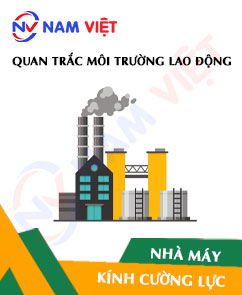
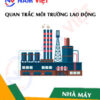
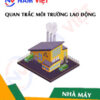



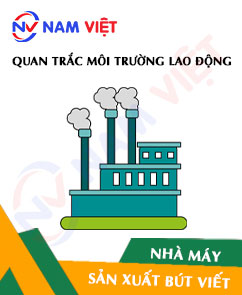



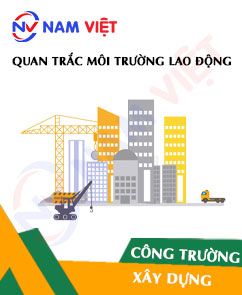
Review Occupational environment monitoring at a tempered glass manufacturing factory
There are no reviews yet.